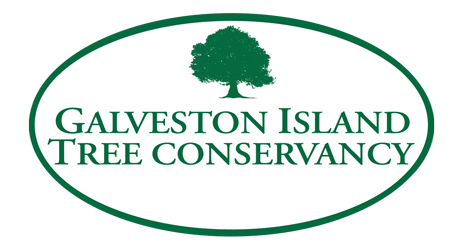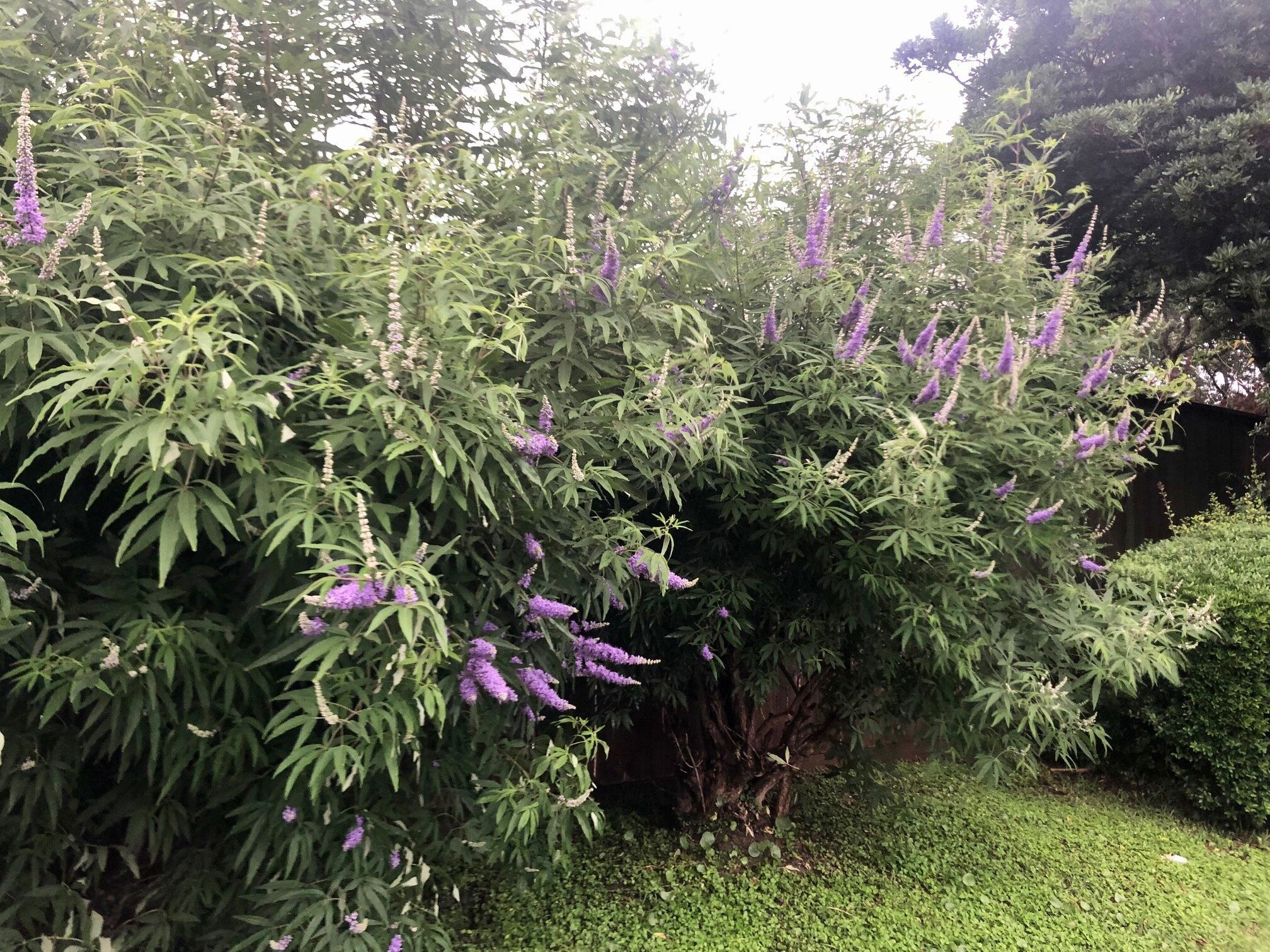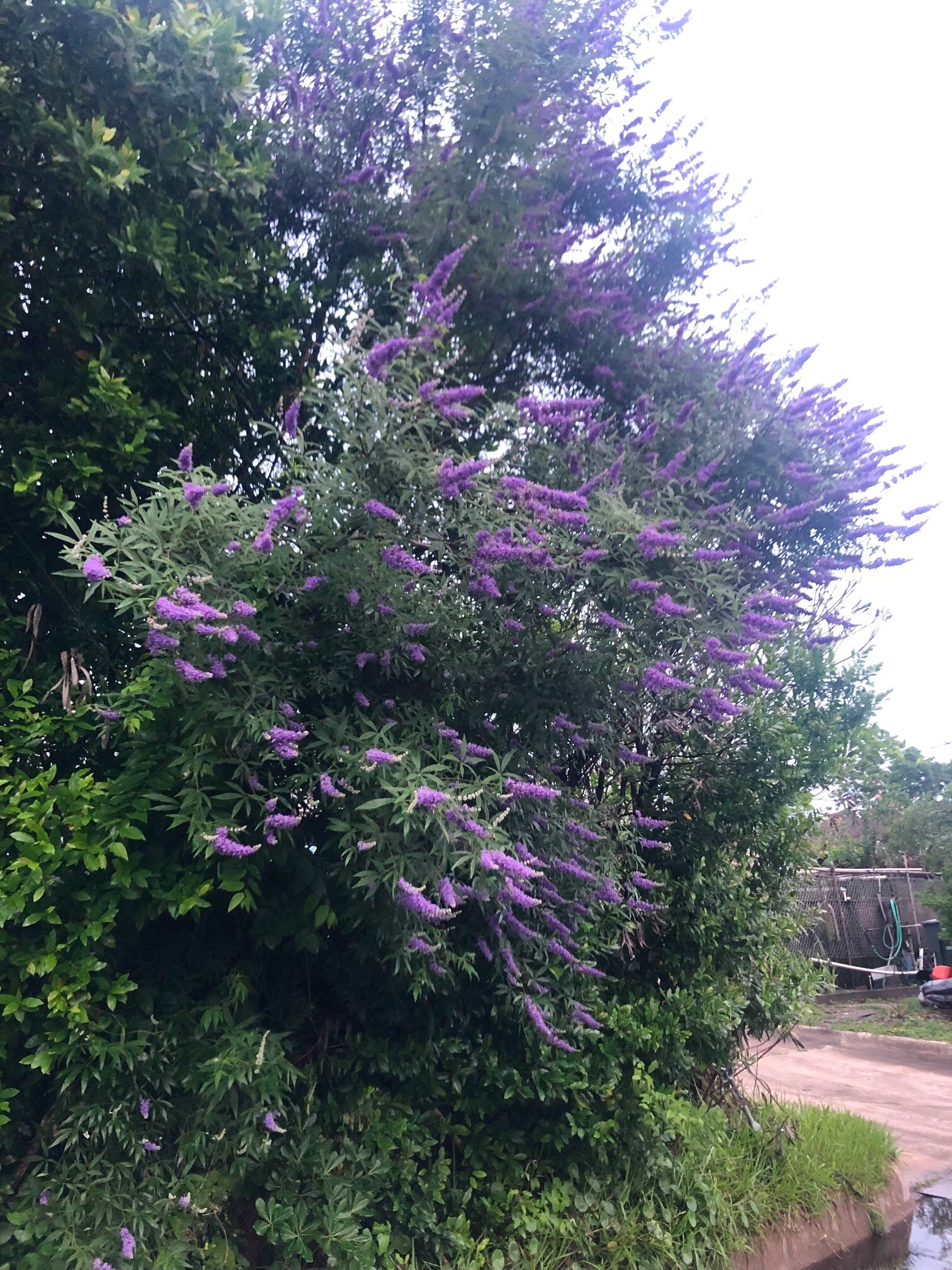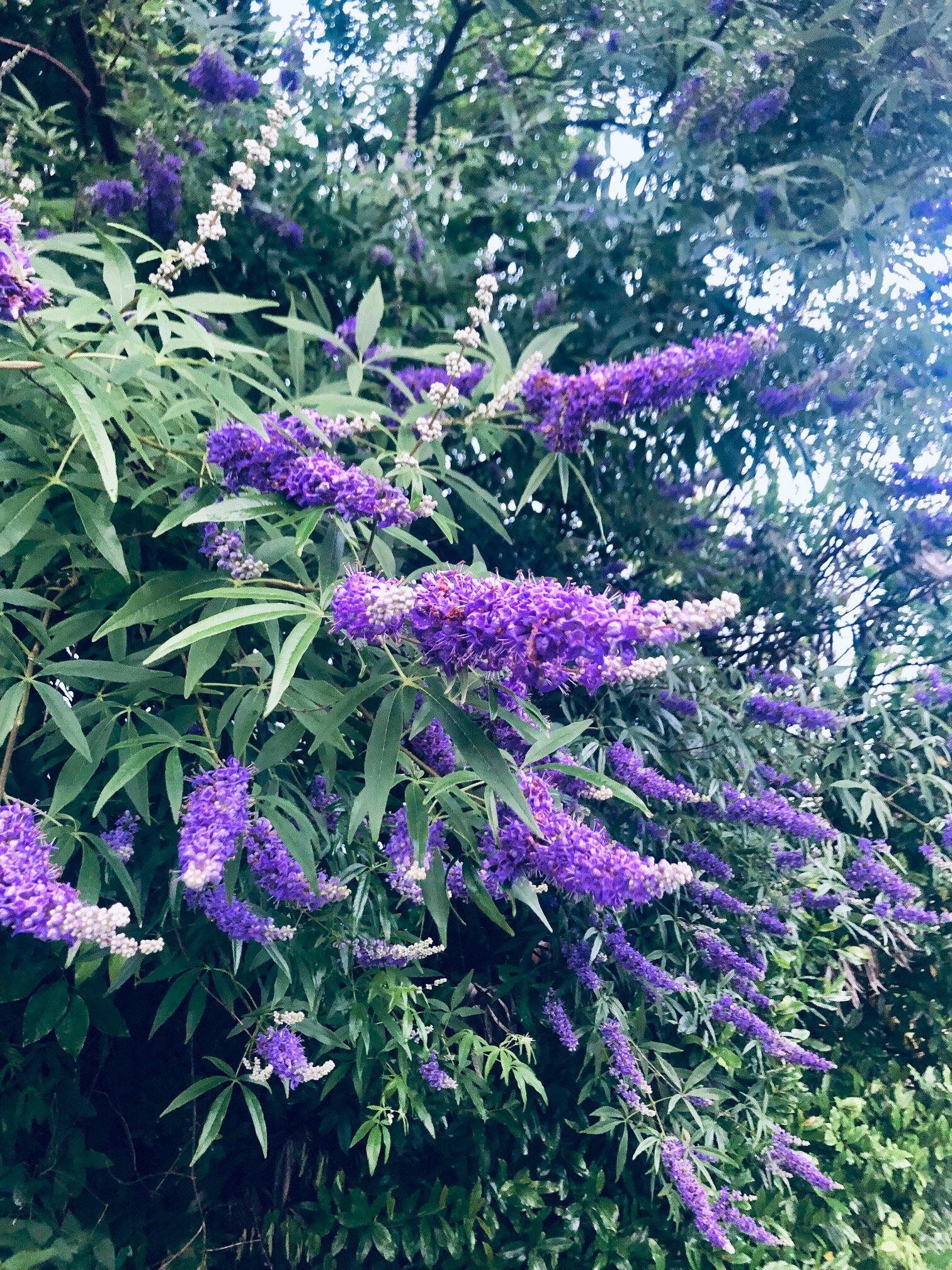Vitex
Tree Stories: Vitex
This time of year we can enjoy one of the loveliest spring bloomers along Galveston streets: the Vitex (Vitex agnus-castus). Spikes of purple blossoms grace these small trees or large shrubs for a few glorious weeks, in streetside plantings, front yards, and peeking from behind fences. Spring rains have made the displays particularly lush this year. This beauty grows quickly in our climate with minimal maintenance. It has been designated as a “Texas Superstar®” due to studies by Texas A&M University researchers.
Vitex is known by many names: Chaste Tree, Texas Lilac, Hemp Tree, Sage Tree, Indian Spice, and more. While its origins are in China and India, it has been naturalized throughout the southern US for over 300 years. Blooms can range in color from pink or purple to white but it is the striking purple blossoms that capture my attention.
Vitex does best in full sun and will grow in a variety of well-drained soils. At maturity it can reach 10 to 15 feet tall and wide with a broad, spreading habit. Plants can be allowed to grow multi-trunked or can be pruned to a few larger branches. Once established the tree is very drought tolerant. It also enjoys good cold hardiness and salt and wind tolerance, and has no serious pests.
Modern varieties produce flower spikes up to 8-12 inches long, generally blooming heavily in early summer and then occasionally through fall. Gardeners can encourage repeat blooming by removing spent flower spikes. Blooms appear only on new wood so it is best to postpone heavy pruning until after leaf drop in winter, or in early spring before new growth begins.
Butterfly enthusiasts will appreciate the fact that like other members of the Vervain family, Vitex attracts butterflies and other pollinators. Bumblebees love this plant and may even spend the night on the flowers.
Vitex has been a popular herbal remedy for over two centuries. Names such as ”Chaste Tree” and “Monk's Pepper” refer to medieval beliefs that using potions made from the berries helped monks maintain their vows of chastity. In modern times it is used for a variety of maladies, including PMS.
Concerns about the possible invasive nature of Vitex seem limited to areas with limestone outcrops and dry creek beds, such as Central Texas. It is not on invasives lists published by the Texas Department of Agriculture and is considered to be a safe ornamental in our area.
Vitex is available from plant retailers but it can be grown from seeds or cuttings. You can also propagate by layering (covering attached lower limbs with soil until they root). Like most trees and shrubs, fall is the best time to transplant because plants establish more easily in cooler weather.
The hardiness and attractiveness of Vitex make it an excellent choice for small landscape areas, or as accent plants in larger spaces. Once you get to know this attractive “superstar” you may need one for your own garden!
“Tree Stories” is an ongoing series of articles about outstanding Island trees, tree care, and tree issues. If you have or know of a special tree on Galveston Island that should be highlighted, please email treesforgalveston@gmail.com. Margaret Canavan is a Galveston resident, a Galveston County Master Gardener, and a member of the Galveston Island Tree Conservancy Board.
Hurricane Ike caused the loss of 40,000 trees on Galveston Island. The Galveston Island Tree Conservancy was formed to address that loss and has replaced over 14,000 through grant-funded plantings and giveaways.





